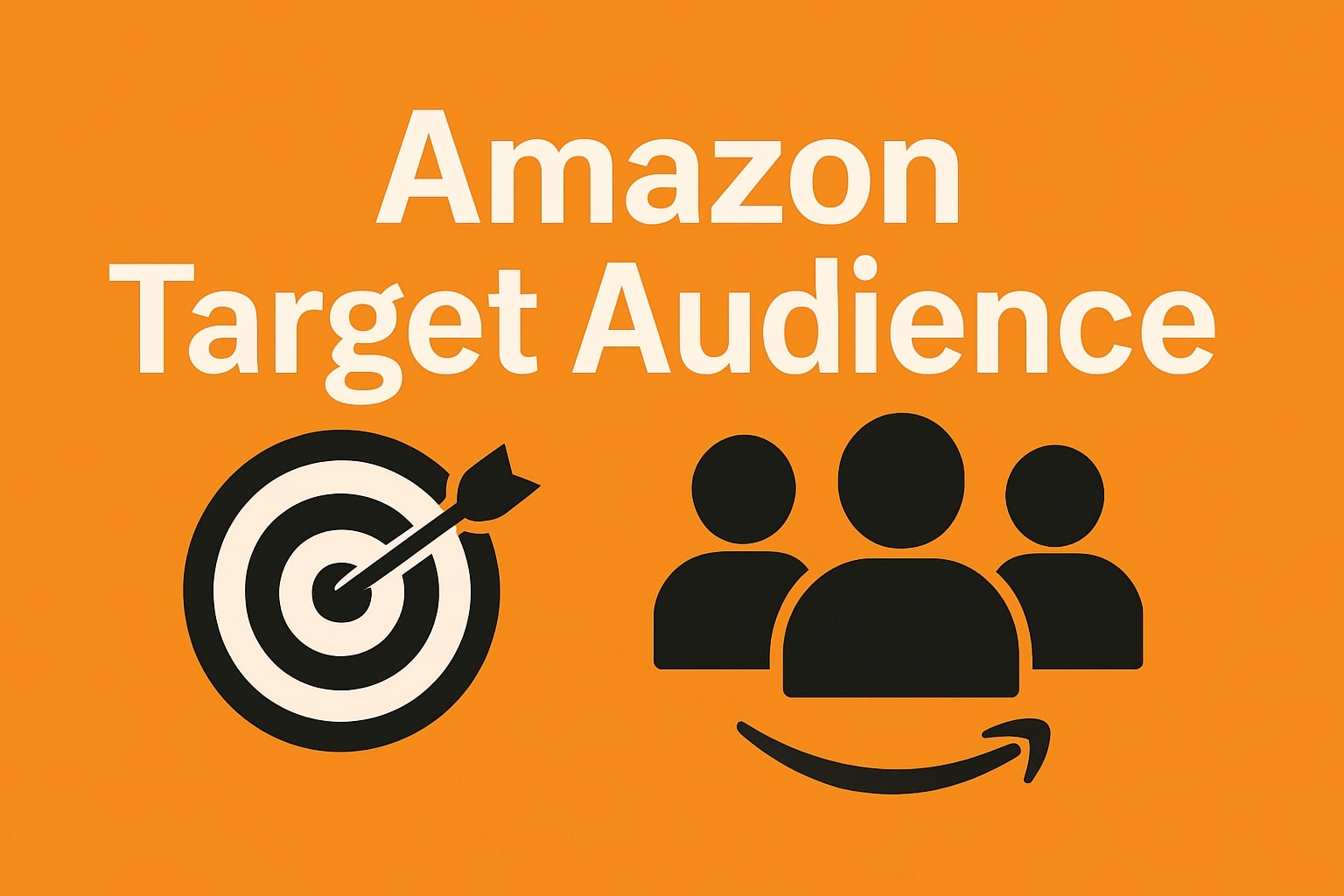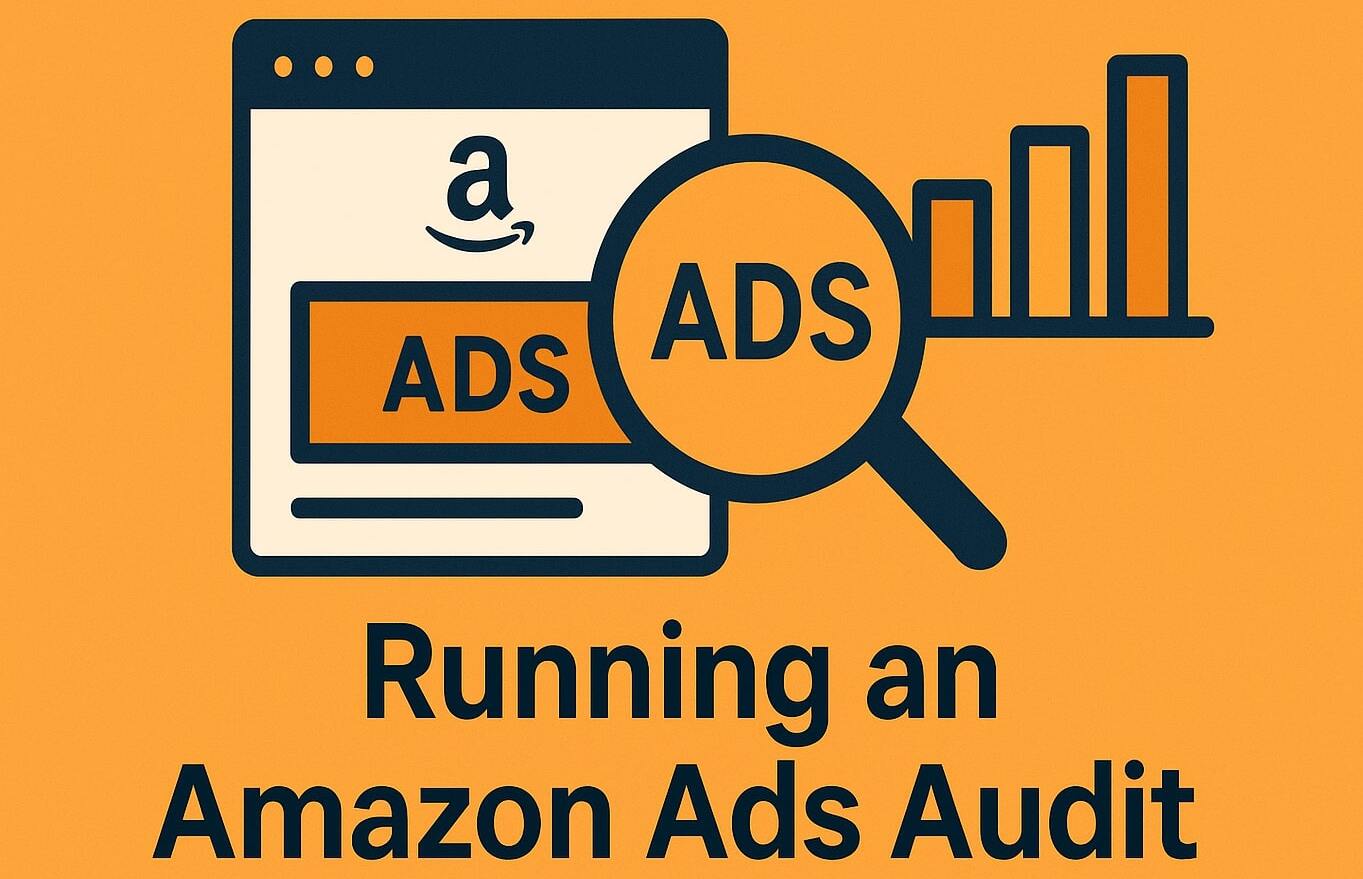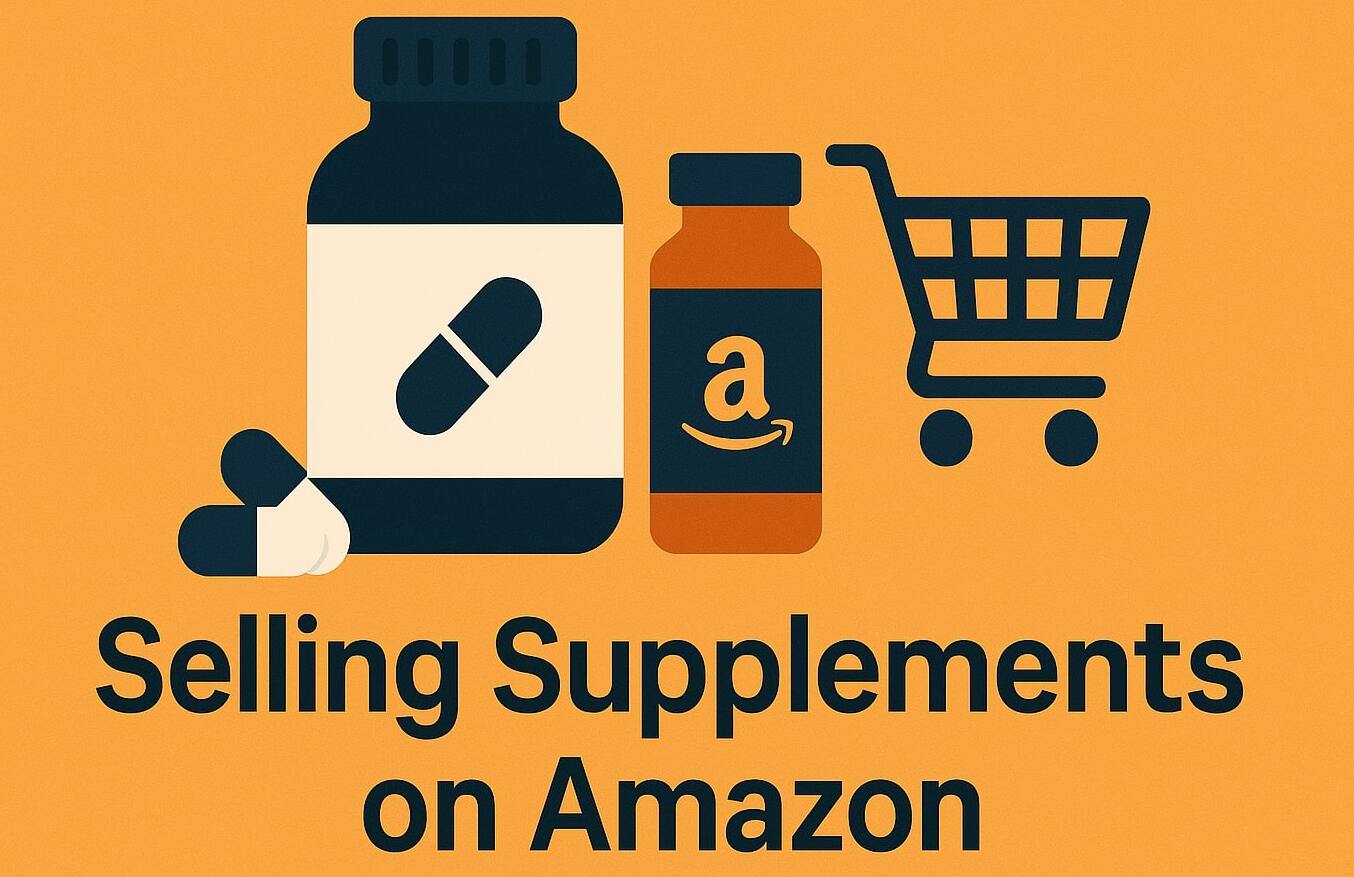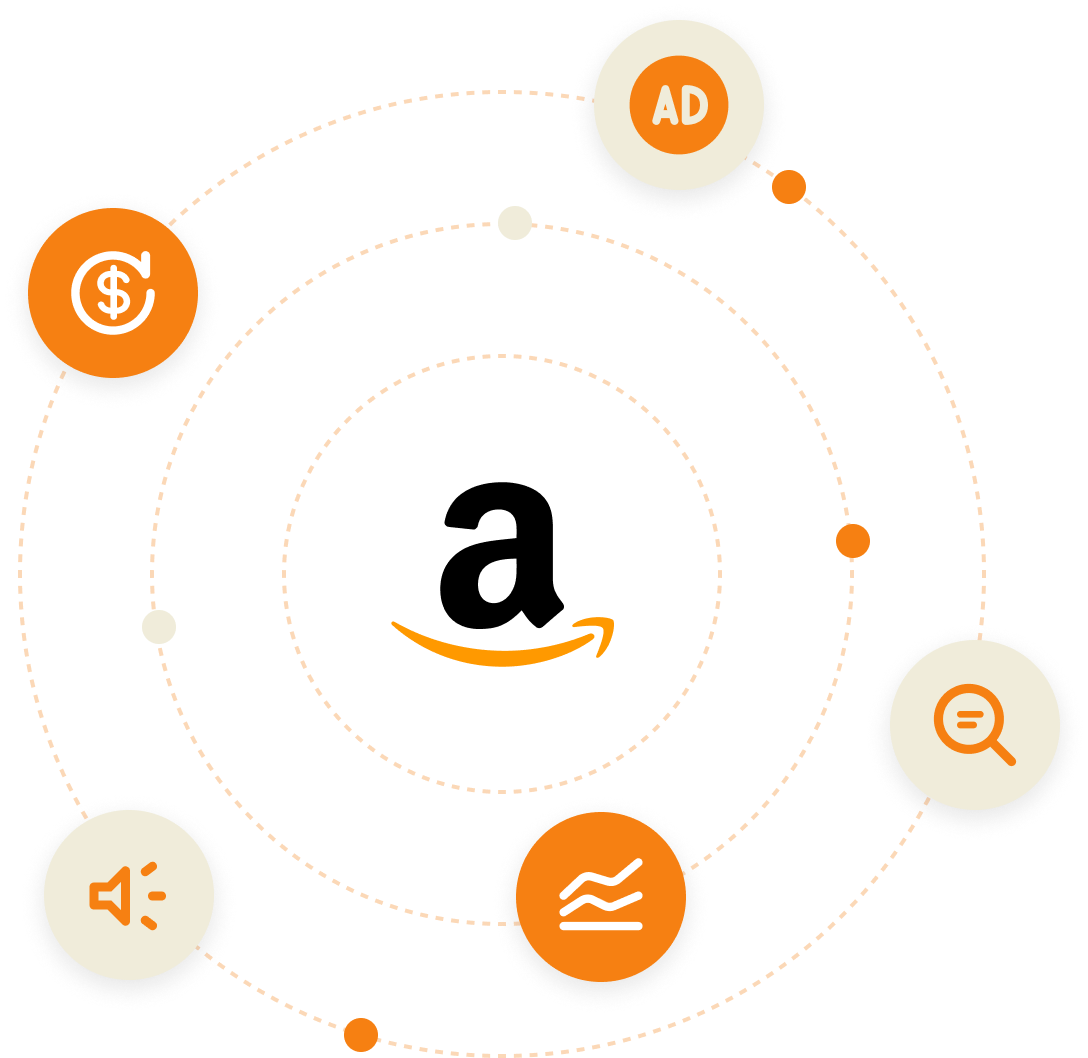Understanding the Amazon target audience is quite important if you want to unlock massive growth and engagement on one of the world’s largest marketplaces. Whether you’re a seller or a marketer, identifying who shops, what drives their decisions, and how to meet their needs will put you miles ahead of the competition.
So–what is there to know about the target audience on Amazon?
Keep reading and find out more.
Is Your Amazon Store Reaching Its Full Potential?
Discover hidden opportunities, reduce wasted spend, and boost your sales with a free expert audit.
Our team will analyze your listings, ad performance, and overall account health to uncover exactly what’s working—and what’s holding you back. You’ll get a tailored blueprint to scale smarter, not harder.
Get a Free AuditThe Main Target Audience On Amazon
Amazon is a store for everyone, which is precisely what makes it such a tempting platform for sellers. With millions of users logging on each day, Amazon is an excellent place to reach a vast and diverse audience. However, while the website may cater to everyone’s needs, there are certain demographics that make up the majority of Amazon’s customer base.
Amazon Demographic Market Segments
- Age: The average age of Amazon users is approximately 36-43 years old, with a significant portion in the 35-49 age group (around 45%). Millennials (ages 25-40) remain a core demographic, and older generations, including baby boomers, are increasingly engaging with Amazon.
- Gender: The user base is nearly evenly split, with about 53% female and 47% male.
- Income: Amazon serves a broad income spectrum, from budget-conscious shoppers to high-income consumers, with small and medium-sized businesses accounting for roughly 60% of retail sales on the platform.
- Education: Many users are highly educated and tech-savvy, with over half (57%) considering Amazon essential to their post-pandemic shopping habits.
Amazon Geographic Segmentation & Market Share
- Global reach: Amazon operates in over 100 countries, tailoring its offerings to regional preferences and needs.
- Market penetration: In the United States, Amazon accounts for approximately 39.6% of the e-commerce market and is projected to reach 40.9% by 2025. It has over 310 million active users worldwide, with 80% based in the U.S. and around 161.7 million Prime members in the U.S. alone.
- Regional strategies: Amazon adapts its product availability, pricing strategies, and delivery options based on regional demand, focusing on rapid delivery in urban areas and accessibility in rural regions.
Amazon Behavioral Segmentation
- Shopping frequency: About 48% of Prime members shop at least weekly, while 37% of casual (non-Prime) shoppers purchase multiple times a year.
- Customer loyalty: Prime members tend to be more frequent buyers, with personalized recommendations driving approximately 35% of total sales.
- Customer motivations: Main reasons for shopping include product availability (66%) and free Prime shipping (56%). Amazon’s recommendation engine plays a significant role in driving sales and engagement.
Amazon Psychographic Segmentation
- Lifestyle and values: Amazon’s online shoppers span a broad social spectrum, including students, professionals, families, and individuals seeking convenience, affordability, and variety.
- Consumer types: Amazon caters to diverse personality and lifestyle archetypes such as “Resigned,” “Struggler,” “Aspirer,” “Succeeder,” “Explorer,” and “Reformer,” allowing tailored marketing approaches.
- Preferences: Customers value convenience, competitive pricing, and a wide selection of products and product categories, with motivations ranging from seeking value to exploring new products and experiences.
Amazon Prime: Building Loyalty, One Customer At A Time
Amazon Prime is a subscription-based service offered by Amazon that provides members with various benefits, including free two-day shipping, access to streaming of movies and TV shows, exclusive deals and discounts, and more. It was first introduced in 2005 and has since grown into a loyalty program with over 200 million subscribers worldwide.
Amazon’s strategy behind Prime is quite brilliant: they offer a wide range of services and products to their members, encouraging them to spend more money on the platform.
For sellers, Prime can be an opportunity (and considering the widespread popularity of Amazon, a necessity) to increase their sales and reach more customers.
Prime offers various benefits to both sellers and customers, making it a win-win situation for everyone involved. For customers, Prime offers free two-day shipping on eligible items, access to streaming of movies and TV shows, unlimited photo storage, early access to deals and discounts, and many more perks. This makes it an attractive option for those who regularly shop on Amazon.
How Amazon Reaches Its Audience
There is a reason why Amazon is the biggest marketplace in the world, and the reason is consisted by a collection of strategies Amazon employs to make its services better.
Some of the most notable ones include:
AI & Machine Learning
Amazon uses AI and machine learning across its ecosystem to streamline operations, improve customer experiences, and enhance decision-making. From personalized product recommendations on Amazon.com to inventory optimization in warehouses, AI is central to Amazon’s growth.
Tools like Amazon Personalize and Amazon Forecast also empower sellers to leverage machine learning for better product marketing and demand forecasting, helping them boost sales and minimize inventory issues.
Additionally, Alexa’s AI capabilities continue to evolve, driving innovation in smart home technology while deepening customer engagement with Amazon’s ecosystem.
Voice Technology
Amazon has revolutionized voice technology with Alexa, its voice assistant, which powers the Echo line of devices. Alexa allows customers to shop hands-free, control smart home devices, and access entertainment seamlessly. For sellers, Alexa opens new opportunities through voice commerce, allowing customers to reorder products or discover new ones using simple voice commands. This technology strengthens customer loyalty to Amazon while providing sellers with innovative ways to connect with their audience in the growing voice-first market.
AWS & B2B Market
Amazon Web Services (AWS) is a cornerstone of Amazon’s growth, providing scalable cloud computing solutions to businesses around the world. AWS supports startups and enterprises alike, helping them innovate faster and reduce costs.
For Amazon sellers, AWS powers tools like machine learning-based analytics, order management systems, and secure data storage. Through AWS, sellers can leverage the same robust infrastructure that supports Amazon’s global operations, enabling them to grow their businesses efficiently. AWS also strengthens Amazon’s positioning in the B2B space, as businesses rely on its cloud services to expand globally.
Challenges & Opportunities as an Amazon Seller
Selling on Amazon opens the door to a massive global audience, but reaching that audience comes with a fair amount challenges. Intense competition, rising advertising costs, and strict policies make it difficult for sellers to stand out and maintain profitability.
Navigating Amazon’s fee structures, managing inventory effectively, and meeting high customer expectations for fast shipping and excellent service add further layers of complexity.
To succeed and really reach their target audience, sellers must focus on understanding their target audience and tailoring their strategy to meet their needs. Specializing in a specific niche, maintaining competitive pricing, and leveraging Amazon’s advertising tools effectively are key to overcoming these hurdles. With the right approach, sellers can thrive in Amazon’s competitive yet opportunity-rich marketplace.
By leveraging the resources available and developing well-thought-out strategies, sellers can capitalize on opportunities within the Amazon ecosystem:
- Global reach: Amazon provides access to millions of customers worldwide, allowing sellers to expand their businesses internationally with tools like FBA Export.
- Fulfillment by Amazon (FBA): The FBA program alleviates logistics concerns, enabling sellers to focus on scaling their business while Amazon handles storage, shipping, and customer service. All of this contributes to a seamless shopping experience for customers and less logistic trouble for sellers.
- Data-driven decision-making: Sellers can utilize Amazon’s analytics tools to better understand customer behavior and market trends, leading to smarter business strategies.
- Niche markets: Identifying underserved niches or unique product offerings can help sellers differentiate from competitors and attract a loyal customer base.
- Marketing tools: With options like Sponsored Products and A+ Content, Amazon provides sellers with effective tools to boost product visibility and conversion rates.
- Scalability: The platform supports scalable operations, allowing businesses to grow with minimal infrastructure investment.
By addressing the challenges proactively and taking full advantage of the opportunities offered by Amazon’s ecosystem, sellers can position themselves for sustained success in one of the world’s largest online marketplaces.
How To Find Your Amazon Target Audience
No matter what range of products you sell, finding target markets to fit your offer is important if you want your marketing efforts to pay off.
Here are some tips to keep in mind about finding the right target audience on Amazon:
Conduct Market Research
Understanding your target audience on Amazon involves identifying your product’s niche, analyzing competitor products and customer reviews, and utilizing Amazon’s search bar and filters. For instance, if you’re selling vegan protein powder, you might analyze reviews of similar products to understand what customers value most, such as taste or mixability.
If you’re selling mystery novels, you might analyze reviews to understand what elements readers enjoy most, such as plot twists or character development.
Once you’ve gathered insights about your target customer, tailoring your product listings is crucial to effectively appeal to them. Focus on creating compelling product titles and descriptions that highlight the key features and benefits your audience values most.
Incorporate relevant keywords to optimize your listing for search results, ensuring it appears prominently when potential customers are browsing. Additionally, high-quality images and engaging A+ content can further enhance your listing, building trust and encouraging more conversions.
Here are some further tips to use when you conduct your Amazon target audience market research:
- Use customer reviews to understand what your target audience likes and dislikes about similar products in the market. This can help you better position your product and address potential pain points.
- Analyze data from Amazon’s sales reports and search terms to identify trends and popular keywords that resonate with your target audience. This can also give you insight into the competition for certain keywords, allowing you to adjust your strategy accordingly.
- Consider conducting surveys or focus groups with your target audience to gather direct feedback on their preferences, needs, and expectations. This can provide valuable insights that you may not have been able to discover through other methods.
Use Amazon Tools & Analytics
Amazon’s Seller Central and Advertising Console provide detailed reports on sales, orders, and customer feedback, as well as insights into your advertising campaigns.
Analyzing this data allows you to identify trends, such as a surge in orders from millennial customers for a skincare product or increased interest from male customers for a video game, and adjust your marketing strategies accordingly.
In addition to trend analysis and customer demographics, these tools allow you to track the performance of specific keywords and ad placements, helping you optimize your campaigns for better ROI. By pinpointing which strategies drive the most engagement and conversions, you can allocate your advertising budget more effectively and stay ahead of the competition.
Here are some advanced Amazon analytics tips we’ve collected over the years of working with hundreds of Amazon businesses:
- Using A/B testing will help you compare the performance of different ads and campaigns, allowing you to make data-driven decisions about your marketing strategy. DO make sure, however, that you’re A/B testing for one variable only (e.g., changing the image or headline, not both at the same time) to accurately measure the impact of each change.
- Taking advantage of Amazon’s Sponsored Brands and Sponsored Products options can significantly increase visibility for your products.
- Use sponsored brands ads strategically by featuring new or top-selling products in eye-catching placements at the top of search results.
- Also, be sure to leverage product display ads to reach customers who are browsing related or complementary products, increasing cross-sales
- Pay attention to search term reports to identify new keywords that customers are using to find your products, and incorporate them into your campaign targeting for increased visibility.
- Don’t forget about negative keywords, as including them will prevent your ads from appearing in irrelevant searches, reducing wasted spending and increasing click-through rates. Regularly reviewing and updating
- Take advantage of Amazon’s demand-side platform (DSP) for more advanced targeting options, such as retargeting and lookalike audiences based on customer behavior and interests.
The best part about all this is most of this information is available directly in Amazon, and with the help of some additional tools, you can really make the most of your Amazon advertising efforts.
Build Buyer Personas
A well-crafted buyer persona goes beyond basic demographics and dives deep into customer segments, psychology, and any other pieces of valuable insights your research uncovers. It dives into the motivations, pain points, and decision-making processes of your target audience.
For example, understanding that “Eco-conscious Emma” values transparency and ethical sourcing can help you highlight these qualities in your product descriptions and marketing campaigns. Similarly, knowing that “Car Enthusiast Eddie” seeks high-performance products can guide you to emphasize features like durability and advanced engineering.
Creating multiple buyer personas allows you to segment your audience and deliver personalized experiences. By identifying distinct traits and preferences within your customer base, you can design targeted email campaigns, social media ads, and product offerings that resonate with each group. This personalized approach not only increases customer satisfaction but also drives conversions and loyalty.
From our experience, here are some things you should not do when it comes to building target personas:
- Avoid basing personas on assumptions without data.
- Don’t create too many personas, which can dilute your focus.
- Refrain from using outdated information for your personas.
- Don’t neglect updating personas as customer behaviors evolve.
Optimize Your Amazon Product Listings
Once you have a clear understanding of your potential customers, you can tailor your product listings and descriptions to resonate with them. For example, if you’re selling fitness equipment to busy professionals, you might highlight how your product can provide a quick and efficient workout. If you’re selling children’s books, you might emphasize the educational value and engaging illustrations.
Language is important. The language that resonates with a 30-something female interested in makeup, may not resonate with a 45-year-old male who is interested in power tools. Speak to your audience.
Keep these tips in mind if you want to make sure you create successful product listings:
- Know your audience. Research your target demographic thoroughly to understand their needs, preferences, and pain points. Tailor your product descriptions to address these directly.
- Use clear and concise language. Avoid jargon and fluff. Keep your language simple and to the point, ensuring your message is easy to understand.
- Highlight key benefits. Focus on the value your product provides. Mention features, but always tie them to the benefits they bring to the customer.
- Include high-quality visuals. Pair your descriptions with clear, professional images or videos to showcase the product’s features and appeal.
- Optimize for search engines. Use relevant keywords strategically in your titles and descriptions to improve visibility and attract more potential buyers.
Leverage Social Media Platforms
Social media platforms provide an excellent opportunity to connect with your target audience and drive sales on Amazon. By creating engaging and visually appealing content tailored to your audience’s interests, you can build brand awareness and foster customer loyalty.
For example, posting tutorials, reviews, or behind-the-scenes looks at your products can capture your audience’s attention and prompt them to purchase. Additionally, using social media ads to promote your Amazon listings can significantly expand your reach to new and potential buyers.
Partnering with influencers on social media can also help you reach a wider audience and gain credibility through their endorsements. Collaborating with other brands or businesses in your niche can also be beneficial, as it allows you to tap into each other’s networks and potentially attract new customers.
Optimize Product Listings for Keywords
Optimizing your product listings based on relevant keyword research is crucial for improving visibility and driving traffic to your Amazon store. Research and incorporate high-ranking, relevant keywords into your product titles, bullet points, and descriptions to align with what potential customers are searching for.
For instance, if you sell fitness equipment, including specific terms like “portable exercise bands” or “home gym essentials” can help your products appear in more searches. Combining this with a strong focus on customer-centric wording ensures your listings are both optimized for search engines and appealing to shoppers.
Here are some specific tips to keep in mind for your product listing keyword optimizations:
- Use long-tail keywords: These are phrases that are more specific and target a niche audience. They may have lower search volume, but they can also lead to higher conversion rates as they attract customers who know exactly what they want.
- Use natural language and avoid keyword stuffing: Instead of repeating the same keyword multiple times in your listing, try using it in a natural way throughout your product description. This not only makes your listing feel more authentic and trustworthy to shoppers, but it also avoids any penalties from search engines for keyword stuffing.
- Research competitor keywords: Take a look at how your competitors are optimizing their listings and see if there are any common keywords or phrases that you can incorporate into yours.
Engage Your Target Audience
Engaging with your target audience on Amazon is crucial for building a loyal customer base. This involves responding to customer reviews and questions, utilizing Amazon’s customer messaging system, and encouraging customer feedback.
For example, if a customer expresses concern about the packaging of your product, you could respond by explaining your efforts to improve packaging sustainability. If a customer has a question about the features of your tech product, you could provide a detailed response that highlights the unique selling points.
Struggling to Scale on Amazon?
Get a free expert audit and uncover quick wins to boost sales and cut ad waste.
Get a Free AuditConclusion
Understanding and identifying your target audience on Amazon is a critical aspect of achieving success on the platform. By leveraging the power of market research, buyer personas, and Amazon’s tools and analytics, you can gain a deep understanding of your potential customers. This knowledge can guide you in tailoring your product listings, descriptions, and advertising strategies to resonate with your audience, ultimately leading to increased visibility, sales, and customer satisfaction.
FAQs
Yes, identifying the target audience can significantly help in overcoming the sales ceiling on Amazon. By understanding the specific needs, preferences, and search behaviors of your audience, you can tailor your product listings, SEO strategies, and Amazon PPC campaigns more effectively. This targeted approach leads to better product visibility, higher conversion rates, and ultimately, increased sales on the platform.
Yes, by understanding your target audience, you can create product listings and marketing campaigns that appeal to them, thereby improving your product’s visibility on Amazon.
Knowing your target audience allows you to design marketing campaigns that speak directly to their interests. This can lead to higher engagement rates and ultimately, more sales.
By identifying your target audience, you can tailor your communication strategies to resonate with them. This can lead to better customer relationships and increased brand loyalty, as well as a wide range of other benefits.
Identifying your target audience can contribute to business growth by helping you create more effective product listings, marketing campaigns, and communication strategies. This can lead to increased sales and customer loyalty.
By understanding your target audience, you can create product listings that appeal directly to their needs and preferences. This increases the likelihood of your product being noticed and purchased.
Identifying the target audience is not a one-time process. Market trends, consumer behaviors, and preferences can change over time, making it essential to continuously analyze and update your understanding of your target audience. Regularly revisiting and refining your audience profile ensures that your marketing strategies, product development, and customer engagement remain effective and relevant. This ongoing process helps in adapting to evolving market dynamics and maintaining a competitive edge.
To identify the target audience on Amazon, start by analyzing your product’s features and determining who would benefit most from them. Next, review customer feedback and reviews for insights into who is currently buying your products and why. Finally, use Amazon’s analytics tools to study purchasing patterns and behaviors, and refine your audience profile based on this data.
Amazon PPC and SEO are instrumental in identifying the target audience. PPC provides immediate data on customer preferences and behaviors through keyword performance and ad engagement, offering insights into what attracts and converts potential buyers. SEO, on the other hand, leverages search trends and optimized content to align with the interests and search habits of your target audience, further refining your marketing and product strategies.
Identifying your target audience on Amazon is crucial for creating effective product listings, marketing campaigns, and communication strategies. It helps to resonate with potential customers and improve your product’s visibility on the platform.




